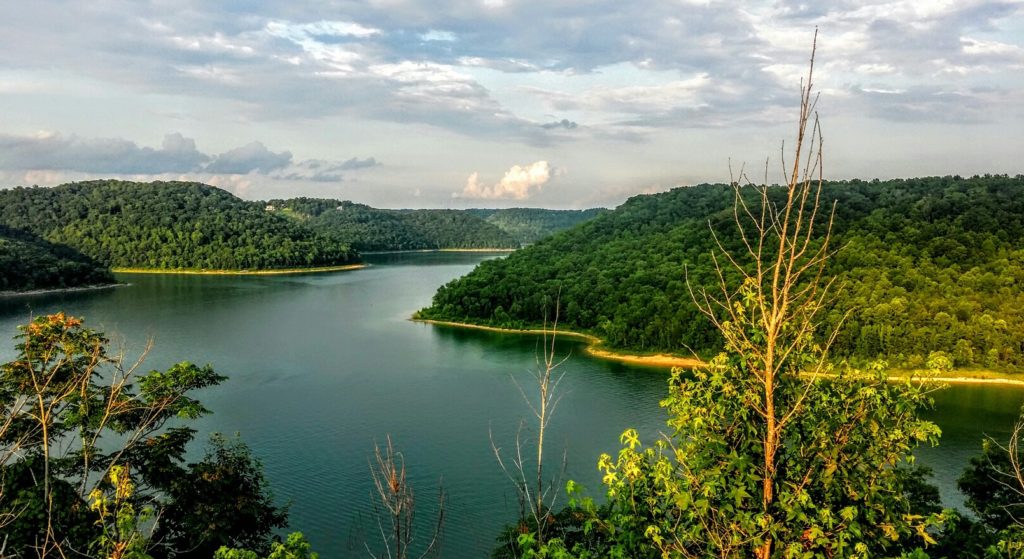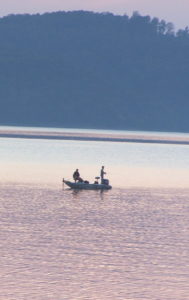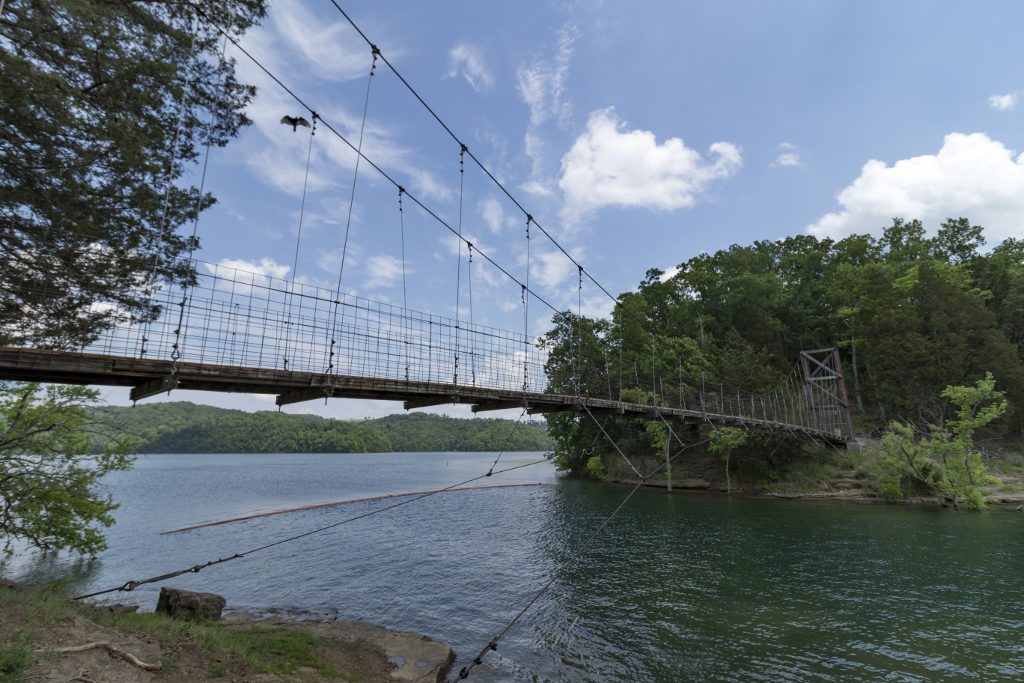
Dale Hollow Lake is one “jewel” of a destination
Reprinted from Crossville Life Magazine
CELINA – Dale Hollow Lake is a jewel nestled in the rolling foothills of the Upper Cumberland.
Dale Hollow Lake can claim the designation of a jewel for many reasons: unsurpassed beauty, world-class fishing, house-boating, and water sports of all kinds. In days gone by, people equated the lake to flood control and hydroelectric power.

Dale Hollow has held the World Record for Smallmouth Bass for many decades.
These are just some of the things that make up the rich history of Dale Hollow Lake. It’s a history that includes state, continent and world records, and visitors in the dozens of millions. It also included a change of life for the residents who live and have lived near its shores and downstream on the Obey River.
Dale Hollow means different things to different people, but its reputation cuts a wide path. When some folks ask us where Celina is, we often tell them “about a two-hour drive northeast of Nashville,” or “due north of Cookeville.”
If we get a blank stare or a pause, we just say “near Dale Hollow Lake.” That almost always makes the light bulb come on.
From the Southeast to the Midwest, Dale Hollow has long been renowned as a vacation and fishing spot. It also claims the world record smallmouth bass. Even if you don’t know exactly where Celina is, chances are great you’ve heard of Dale Hollow Lake.
So much to do, so little time
To some, Dale Hollow means smallmouth bass fishing, but that’s not the only thing to fish for in the lake or the Obey River.
To others, Dale Hollow means house-boating. How good is the house-boating on the lake? Pickaslip.com rated Dale Hollow as the top house-boating destination not only in the U.S., but on the continent. It ranked ahead of such vacationing heavyweights as Lake Powell in Utah and Lake Mead near Las Vegas and the Grand Canyon. Type house-boating destinations into your search engine, and see how many lists Dale Hollow is on.
Dale Hollow can also mean scuba diving and snorkeling to others. The clarity of the lake is outstanding, and attracts divers from hundreds of miles away.
Water sports in general come to mind when Dale Hollow is mentioned to to others. People ski, jet ski or “tube” on Dale Hollow, and there’s no secret why. With over 600 miles of shoreline, there’s plenty of room for everyone to have fun. Others prefer to tool up or down the lake on a pontoon or smaller boat.
Certainly among the most appealing features of Dale Hollow Lake is its rustic beauty. Through the impoundment of the Obey River, Dale Hollow was carved from the hills and valleys of the Cumberland Plateau. It’s an area known for its rugged, breathtaking landscape.
Through a conscious effort, Dale Hollow Lake has retained virtually all of that landscape. The U.S. Army Corps of Engineers has never allowed direct private landowner access to the lake. The Corps keeps a considerable buffer between private property and the lake’s shoreline. The result has been a lake largely undisturbed by outside influences. Seeing is believing.
How and why Dale Hollow was formed
Dale Hollow Dam is “one of the multipurpose projects that make up the Corps of Engineers’ system for development of the water resources of the Cumberland River Basin. This system is an important part of a larger plan of development for the Ohio and Mississippi Rivers,” the U.S. Army Corps of Engineers website says.
The dam was constructed for both flood control (initially) and the generation of hydroelectric power. “Dale Hollow Dam and Lake function to control the floodwaters of the Obey River and contribute to the reduction of flood levels at municipal, industrial and agricultural areas along the Cumberland, lower Ohio and Mississippi Rivers,” the Corps website says.
Before construction of Dale Hollow Dam, and Lake Cumberland Dam, upstream on the Cumberland River, much of the area regularly experienced flooding issues. Celina is located at the confluence of the Cumberland and Obey rivers, and had serious flooding problems before those dams were built.
What has been known as the “Old Town” area of Celina for decades is where much of the “town” was once located. It was situated on the banks of the Cumberland and Obey. Due to flooding issues, town was eventually moved to higher ground. Those problems are now a distant memory.
Dale Hollow Dam and Lake was authorized by the Flood Control Act of 1938, and the River and Harbor Act of 1946. The flood control part of the project was completed in 1943, with power generating units being added in 1948, 1949 and again in 1953. The Corps says power produced at Dale Hollow Dam will supply the needs of an average city of 45,000 people.
The dam and the lower portion of the lake is located roughly three miles east of Celina.
The evolution of the lake
The lake was formed for flood control and hydroelectric power. A few years after its impoundment, though, privately-owned marinas began to dot the shoreline. Then, its reputation as a fishing hotspot started to form.
That reputation reached worldwide proportions in July of 1955, when David Lee Hayes dragged the world-record smallmouth from the lake. That record still stands. Other record fish have come from the lake and from nearby bodies of water. Dale Hollow and Clay County have been a highly-visited fishing destination for well over a half-century.
Clay County is also the home of two smallmouth bass celebrities. The late smallmouth bass legend Billy Westmoreland was a highly-successful pro fisherman on the Bassmaster Tournament Trail in the 1970’s and 80’s. He also authored two books on fishing, and hosted a television show. Stephen Headrick, known as the “Smallmouth Guru,” is a professional fisherman who resides in Celina, as Westmoreland did. Headrick writes fishing articles for a variety of publications and websites, and is the owner of Punisher Lures.
Clay County is also home to six marinas on Dale Hollow Lake.

The Swinging Bridge at Pleasant Grove Recreation area near the dam has always been one of the iconic destinations on Dale Hollow Lake. (Photo courtesy Chuck Sutherland)
